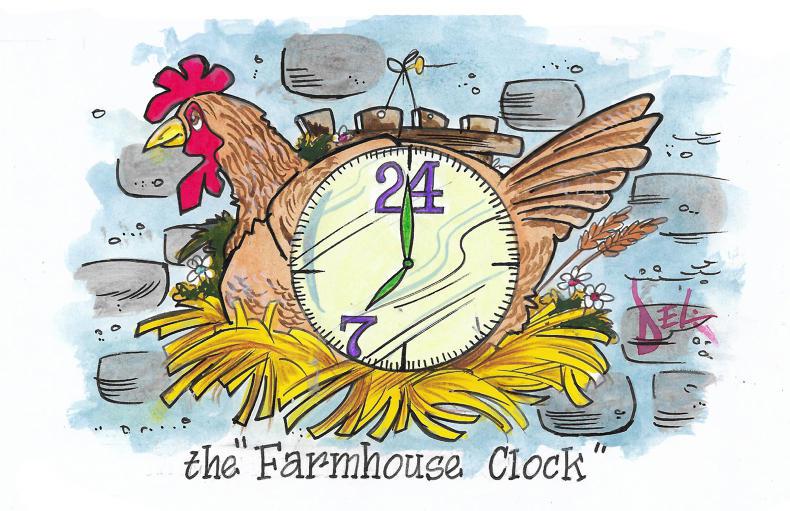Farming is cyclical. We move through the seasons seamlessly. Yet, no two years are the same. It is part of the attraction of farming. It is ever-changing and ever-challenging. This time last year we were dealing with freezing temperatures and the countryside was under a blanket of deep snow.
Keeping calves cosy was a real concern for us. We humans were frozen too. Farmers were under pressure to get fodder to animals that were outside. This spring is gentler on man and beast. The thermometer in the shed has been bouncing around 9-11°C by day. As usual the work pace is fast and furious. We expect it so we are mentally ready and in the right zone in our heads. We can cope with early mornings and late evenings once everything is going to plan.

It’s when things go wrong that difficulties arise. It can add pressure and derail the farmer and the family in a few days. A disease outbreak, difficult calvings, lack of fodder, high somatic cell counts and so on become too much of a load to carry. But the good news is that the next season might be different. That’s the optimism of farming and the dogged will to keep going no matter what.
A good spring
We are having a particularly good calving run. By end of business on the last day of February, we had 115 cows calved with 52 heifers on the ground, 49 of them AI-bred and a total of 117 live calves. Two cows had twins.
I can’t remember when we had over 100 cows calved and 0% mortality. It is due to a conglomeration of a number of things; good nutrition of the cows, easy-calving sires, vigilance and observation on our parts and feeding by night to encourage early morning and daytime calving.
The calf was still in the membrane with the head twisted underneath her. I rushed over, broke the membrane and stretched out the calf
The mild weather has to be a contributor as well as a bit of luck. One morning last week, I came into the shed to see a cow having just calved. The calf was still in the membrane with the head twisted underneath her. I rushed over, broke the membrane and stretched out the calf. Lifting the leg, I saw it was a lovely heifer. “Of course it would be!” I sighed. I could see her heart beating but she was not breathing. I stimulate her lungs and poked a straw into her nose and was rewarded with the sound of a deep intake of breath. What a wonderful sound ensuring that the heifer would stay in the herd for many years. I remember going to the aid of a similar calf last year. Alas, I was that few seconds too late and I failed to revive the heifer. So that’s the luck bit and when Lady Luck is with you, it is important to hold onto her as tight as you can. Last Wednesday she left me.
Lady Luck leaves
I was committed to the yard for the day. It started out as a busy morning. I picked up three beautiful heifers in the morning. I fed the calves and left the yard about 11.30am. The men had to go away for a few hours. “Mom, won’t you look after 1185 please? I checked her there and she was out by the water trough.”
“Of course I will," I said assuredly. She’d delivered twin bulls the day before and had been down with milk fever. Tim and Colm treated her in the morning.
The crisis seemed averted. The following day, the vet was called again
By 1pm on my watch, she was down again. I gave her a bottle of calcium under the skin. When she hadn’t bounced back in 30 minutes, I called the vet. As he approached her in the field, she got up! The crisis seemed averted. The following day, the vet was called again. By now, it was clear that her problem was not milk fever but something else entirely. We made her as comfortable as possible and she died that night. So when you think you’re up, you can come down very quickly.
That’s farming for you and where you have livestock, you will have deadstock too. It is important to draw a line under these events and move on. No farmer is immune to these losses so keep a healthy perspective.






 This is a subscriber-only article
This is a subscriber-only article










SHARING OPTIONS: